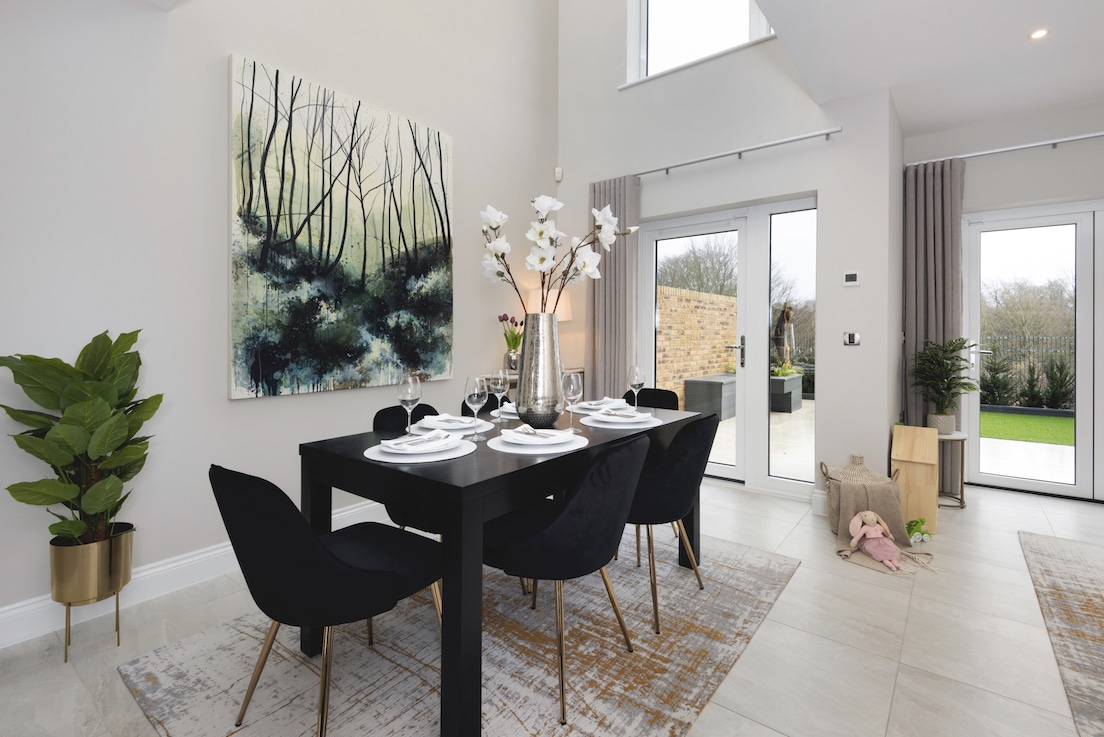Discovering the techniques to enhance the appearance of a small living room can greatly elevate its perceived value and functionality as a central living space, and achieving this is simpler than you might imagine.
From window treatments and reducing clutter to reimagining furniture arrangements, there are simple strategies that can effectively optimise space in even the most compact living rooms.
Clear and Organise: Initiating a thorough decluttering process is crucial to organising a limited area. Begin by streamlining possessions to prevent the space from becoming overwhelmed by items. Small rooms are prone to clutter, so exercise discretion when introducing new objects and consider their intended purpose.
Incorporating shelving can contribute to a more expansive ambiance, but maintaining tidiness is crucial.
When space is at a premium, concealed storage options become invaluable. Explore furniture pieces like coffee tables or TV units that offer hidden compartments for additional storage. The market also features a range of furnishings with built-in storage solutions, such as concealing extra cushions and throws. Leveraging built-in storage optimises floor space while preserving a stylish aesthetic.
Enhance Flow by Freeing up Floorspace: Furniture with raised legs effectively imparts an illusion of space. Unobstructed sight lines through the room, unimpeded by furniture, yield substantial results. The same in bathrooms where floating toilets and vanity units make the space feel larger.
Rethink Seating Arrangements: Contrary to the unspoken norm of a living room requiring a large sofa, all you really need is seating proportional to the available space. If space is limited, consider alternatives to traditional sofas, such as comfortable chairs or other soft furnishings.
Opting for a smaller sofa minimises the visual weight within the room. This not only prevents the dominance of a singular bulky piece but also imparts flexibility in arranging seating and increases floor space.
Harness Light with Mirrors: Employing mirrors and mirrored surfaces remains a timeless technique to introduce light and airiness to small living spaces. Large mirrors are an effective means of visually expanding a room. Optimal results can be achieved by positioning a large mirror to capture outdoor views, lending extra depth to the space.
Mirrored effects extend beyond wall hangings; glass furniture and surfaces also amplify luminosity. Glass coffee tables, for instance, serve as light-reflecting additions that maintain seamless flow.
Strategic Furniture Arrangement: Leverage the room’s dimensions to capitalise on every available inch. Rather than exclusively opting for the smallest furniture items, prioritise finding pieces that harmonise with the space. For example, selecting a precisely fitting corner sofa can ingeniously divide a small room into distinct sitting and dining areas, effectively doubling the perceived size.
Designing layouts that complement existing furniture instead of adhering to conventional arrangements maximises efficiency. Shifting furniture slightly away from walls fosters a sense of openness. Incorporating curved and organic forms is a current interior trend, diverting emphasis from strictly linear alignments.
Amplify Natural Light: Harnessing natural light amplifies the airiness of a confined space. Light significantly influences a room’s perceived dimensions, with natural light playing a pivotal role in brightening and enlarging the home.
Embrace a Generous Rug: Contrary to intuition, introducing a large rug to a small room enhances the sense of space. Beyond adding comfort and warmth, a generously sized rug creates an illusion of expanded floor area due to its scale.
Positioning the rug beneath furniture anchors pieces and lends an illusion of spaciousness. A substantial rug creates a favourable perspective, visually extending the floor.
Exercise caution when embracing bold designs, as there’s a potential for overwhelming the limited space. Consider selecting solid colours rather than intricate patterns for rug designs if your aim is to introduce a decorative element. Alternatively, adhere to neutral tones and textured patterns to add interest without diverting excessive attention from the overall decor.
Utilise Creative Room Dividers: Employ simple techniques to establish distinct zones within the living space, fostering a multifunctional environment. Implementing room dividers effectively expands the room’s perception by introducing detachment between different zones.
Plants offer not only visual appeal and freshness but also serve as natural partitions within the room. Alternatively, consoles, shelving units, or sideboards with tall lamps can separate areas, especially when repurposing a living area as a daytime office.
Artwork Placement Strategy: When considering living room wall decor, the positioning of artwork is very significant. Hanging artwork on the largest wall surface fosters an open atmosphere. Contrary to expectations, larger canvases contribute to a heightened sense of space. Opt for impactful, single pieces of art rather than crowded arrangements to ensure a cohesive and spacious feel.
When trying to make a small living room look bigger, it’s all about how you set things up. Put furniture in smart places, pick colours carefully, and choose decorations that don’t crowd the space. Mirrors and hidden storage help too. Just remember, keeping things balanced and not too busy is the key. Whether you go for light colours or simple rugs, you’re not just making it look good – you’re making the room feel open and comfortable.



